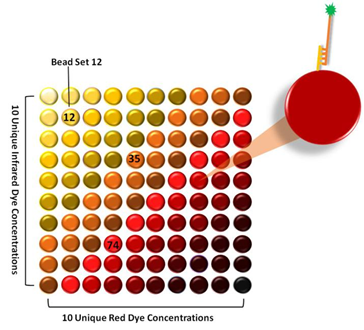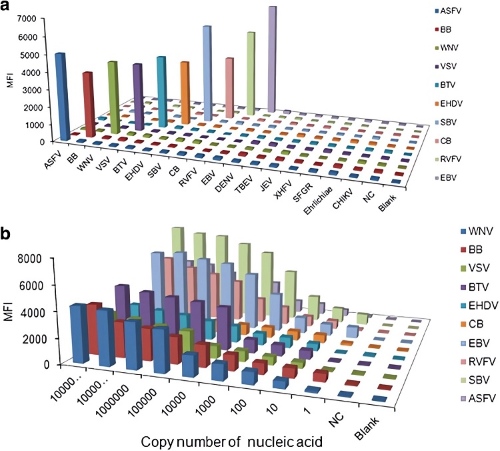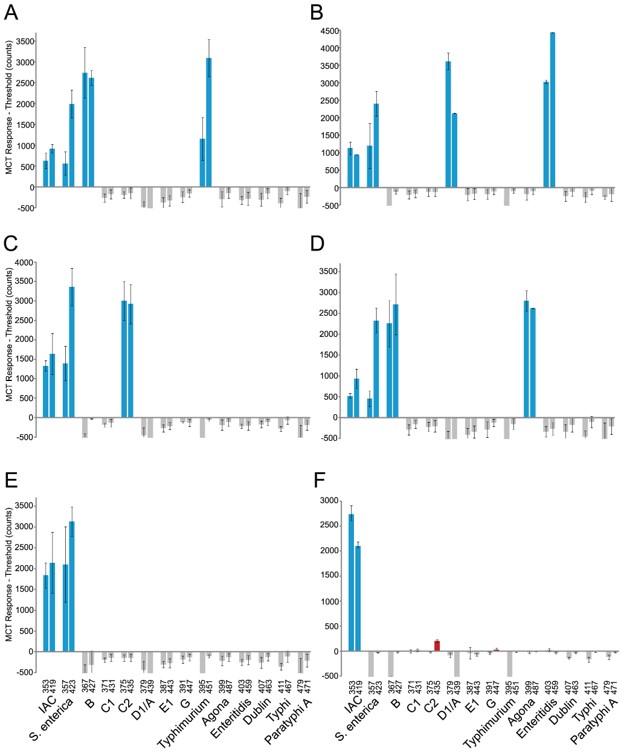The increasing number of proteomics, transcriptomics and genomic sequence data obtained from public databases provides a rare opportunity for the development of new and diversified detection technologies. At present, the technology based on the concept of liquid (suspension) array has been established and widely used in pharmaceutical, clinical and research laboratories. Creative Biolabs provides professional method development and detection services based on liquid array diagnostics (LAD) technology.
Introduction of LAD
Unlike the conventional microarray technology, which is characterized by the position of the analyte on the slide, LAD technology uses different groups of microspheres in liquid suspension as the determinant of analyte specificity. The microsphere groups are internally stained with two kinds of fluorophores with different spectra. The spectral characteristics are unique for each microsphere and are determined by the different concentrations of the internal dyes, resulting in a microsphere array of 100 members with different spectra. The integration of a third internal dye has allowed the expansion of microspheres with up to 500 members.
The surface of each microsphere group allows simple chemical coupling of various reagents specific to a specific bioassay, such as nucleic acid assay, immunoassay, enzyme assay or receptor-ligand assay. Another fluorescent reporter (e.g., streptavidin-r-phycoerythrin) is coupled to the target molecule, which allowed specific capture on the surface of the microspheres for detection.
 Fig.1 The LAD technology based on internally dyed microspheres.1, 2
Fig.1 The LAD technology based on internally dyed microspheres.1, 2
Methods of LAD Development in Creative Biolabs
There are different types of microsphere available, and their selection is usually determined by the type of instrument used for detection and the specific target analyte. Microsphere-based technology can be used in a variety of analytical forms. According to the type of analyte, we divide them into:
- Microsphere-based multiplex immunoassay
- Microsphere-based nucleic acid assays
- Microsphere-based protein assays
In general, compared with other commonly used methods, the LAD based analysis format is very open and flexible, ensuring that the result data can be obtained in a few hours with a very small number of samples, and the experimental variability can be minimized due to the use of multiple data points from a single experiment.
What Can We Do?
- Sufficient experience: rich project experience to enhance our service confidence;
- Excellent quality control: the test in the production process through a number of quality control steps to ensure long-term reproducibility and consistency;
- Specificity: for each target analyte, all target analytes were screened;
- Custom service: professional customization team can help you meet your unique needs.
If you are interested in our service, please contact us for your exclusive solution.
Published Data
1. A Novel Liquid Bead Array for Simultaneous Identification of Ten Insect-Borne Pathogens
 Fig.2 Specificity and sensitivity of the liquid array detection system.3,2
Fig.2 Specificity and sensitivity of the liquid array detection system.3,2
This study developed a liquid bead array technology for simultaneously detecting multiple insect-borne pathogens. Tailored probes and primers were engineered to identify the nucleic acids of these pathogens, which were coupled with fluorescent carboxylated microspheres. The system’s parameters were optimized, including a forward/reverse primer ratio of 1:2, a hybridization temperature of 50°C for 30 minutes, and 2 μl of PCR product. The system demonstrated high sensitivity, specificity, and reproducibility, with each probe showing distinct fluorescence signals without cross-hybridization. The minimum detection limit of 10 target gene copies was achieved. The optimized system successfully detected insect-borne pathogens in 3000 clinical samples, with results matching those from gold-standard assays and commercial kits. This liquid array system shows promise for rapid, effective detection of insect-borne diseases at border health monitoring and in molecular epidemiological studies.
2. Development of Liquid Arrays for High-Throughput Multiplexed Genetic Profiling
 Fig.3 Detection and subtyping Salmonella isolates using the prototype probe liquid array assay.4,2
Fig.3 Detection and subtyping Salmonella isolates using the prototype probe liquid array assay.4,2
This work developed a probe liquid array system integrated into a high-throughput, mid-plexing analytical platform for robust qualitative DNA target detection. Samples were first analyzed through array PCR with primer sets labeled with unique mass tags. Lambda exonuclease and a set of probes were used to interrogate the PCR products, allowing specific identification of target sequences. Primers and probes underwent hybridization in a homogeneous solution, offering advantages over micro- or nanoparticle suspension arrays. The resulting hybrids, tagged with two mass tags, were detected using a benchtop single quadrupole mass spectrometer. The system's value was demonstrated with a 14-plex assay for subtyping Salmonella enterica serogroups and serovars. This flexible liquid array system allows customization of test panels to include varying markers.
References
- Reslova, Nikol, et al. "xMAP technology: applications in detection of pathogens." Frontiers in microbiology 8 (2017): 55.
- Distributed under Open Access license CC BY 4.0, without modification.
- Wang, Hui-yu, et al. "Establishment and optimization of a liquid bead array for the simultaneous detection of ten insect-borne pathogens." Parasites & vectors 11 (2018): 1-11.
- Richmond, Gregory S., et al. "MassCode liquid arrays as a tool for multiplexed high-throughput genetic profiling." Plos one 6.4 (2011): e18967.
For Research Use Only.

